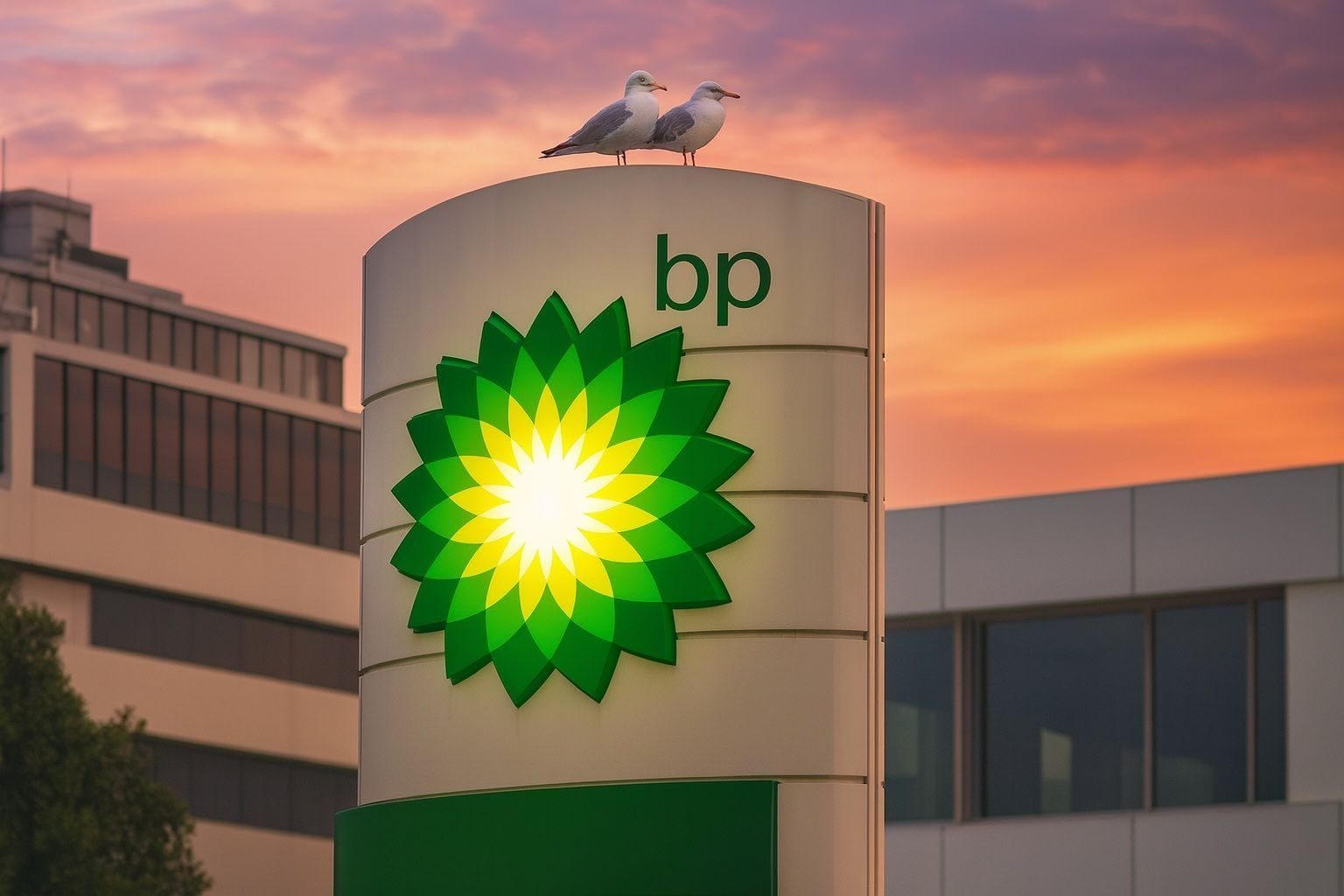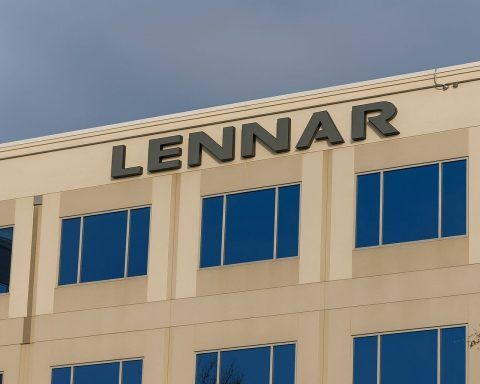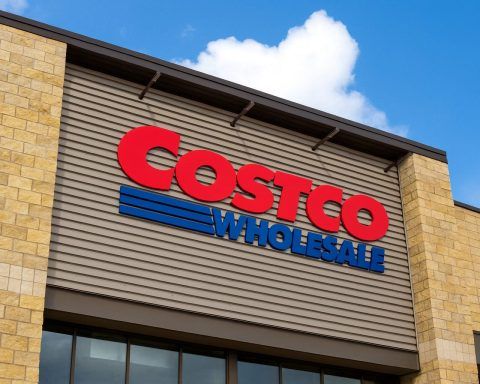BP’s share price edged higher on Friday, 28 November 2025, as investors weighed steady oil prices around $63 a barrel, another sizeable share buyback, ongoing talks over a sale of the Castrol lubricants business, and fresh developments around the Olympic Pipeline leak in the United States.
BP share price today on the London Stock Exchange (LON: BP.)
BP’s primary listing in London finished the session firmly in positive territory.
- Closing price (London): BP closed at about 454p (454.2p), up around 1.6% from Thursday’s close of 447.0p. [1]
- Intraday range: Shares traded roughly between 448.3p and 454.8p during the day. [2]
- Volume: Around 17.7 million shares changed hands, broadly in line with the recent average for the stock. [3]
- 52‑week range: Over the past year BP has traded between about 329p and 476p, leaving today’s close only around 5% below its recent high. [4]
Different data providers show slightly different last prices (for example, Google Finance shows 453.55p as of 4:52 p.m. UTC), but they all point to a modest rebound after Thursday’s dip and a finish near the top of today’s range. [5]
On headline valuation metrics:
- Market cap: Roughly $93 billion. [6]
- Dividend yield: Around 5.3–5.4%, reflecting BP’s commitment to a generous payout alongside buybacks. [7]
- Trailing P/E: A high‑looking low‑60s multiple on trailing earnings, distorted by one‑off items; Morningstar’s “normalised” numbers imply a more ordinary mid‑teens P/E. [8]
Performance over longer horizons remains solid. According to performance figures cited from Hargreaves Lansdown, BP is up roughly 16% over the past year and more than 70% over five years, even after recent volatility. TechStock²
BP ADRs in New York (NYSE: BP)
BP’s American Depositary Receipts (ADRs) also traded higher in Friday’s shortened US session.
- Intraday price (New York): Around $36.1–$36.2 by late morning on Wall Street, up roughly 0.6–0.7% on the day. [9]
- 52‑week range: About $25.2 to $37.6, keeping the ADRs close to their recent highs. TechStock²+1
Real‑time prices will continue to move until the US market closes, but both London and New York listings are telling the same story today: BP is drifting higher, not surging, but holding near the top of its 12‑month range.
Why BP shares are up on 28 November 2025
Today’s move is small in percentage terms, but it sits on top of a much bigger rerating over the past year. Several forces are in play.
1. Daily share buybacks are quietly shrinking the float
BP has been leaning heavily on share repurchases to return cash and support earnings per share.
- On 4 November 2025, the company formally launched a new buyback programme under its capital framework, authorising another round of ordinary share repurchases. [10]
- On 27 November, BP disclosed that it repurchased 1,600,015 shares at a volume‑weighted average price of around 447.7p, with the shares to be held in treasury. After this transaction, BP held 835.6 million shares in treasury and had about 15.65 billion ordinary shares in issue. [11]
- Today, 28 November, BP followed up with another RNS: it bought back 1,560,557 shares at a volume‑weighted average price close to 451.6p, paying between roughly 449p and 455p across London and Cboe venues. The treasury holding rises to 837.2 million shares, with 15.649 billion ordinary shares remaining in issue. [12]
That’s more than 3.1 million shares retired in just two days, on top of earlier November activity. At today’s price, that implies tens of millions of pounds of daily demand for BP stock coming from the company itself – a structural tailwind for the share price as long as the programme runs.
2. Oil prices are steady around $63 after CME outage drama
For any integrated oil major, the macro backdrop starts with crude prices. Today:
- Brent crude futures for January 2026 trade around $63.2 per barrel, with a day range of about $63.05–$63.76. That’s modestly lower year‑on‑year but comfortably profitable for BP’s portfolio. [13]
- A Reuters market wrap describes Brent as “little changed” on Friday, with traders watching Russia–Ukraine headlines and an upcoming OPEC+ meeting, while WTI briefly jumped after trading resumed following a CME technical outage that halted parts of the futures complex. [14]
Steady oil around the low‑$60s doesn’t trigger euphoria, but it supports BP’s cash‑flow story and makes it easier for management to keep funding capex, dividends and buybacks without stretching the balance sheet.
3. Castrol sale talks keep the “deleveraging optionality” alive
The other big narrative in the background is BP’s potential sale of its Castrol lubricants business.
- On 13 November, Reuters reported that BP is in active talks with Stonepeak over a sale of Castrol, as part of its $20 billion divestment goal to end‑2027. Market expectations, according to RBC analysts cited in the piece, put the potential deal value at around $8 billion, though no transaction is guaranteed. [15]
- The report highlighted that activist hedge fund Elliott and other investors have been pressing BP to simplify its portfolio and cut debt, with Castrol seen as a major test of management’s ability to execute disposals at attractive prices. [16]
Even though there was no fresh Castrol headline today, the story remains front‑of‑mind for investors. A credible deal could accelerate debt reduction and potentially unlock room for larger or longer‑lasting buybacks, which is one reason BP’s valuation has crept higher.
4. Olympic Pipeline leak: risk easing but not gone
BP is also dealing with the fallout from a refined‑products leak on its 400‑mile Olympic Pipeline in the US Pacific Northwest.
- The leak, first detected on 11 November, forced BP to shut the entire system, prompting fuel emergencies in both Washington and Oregon and disrupting jet fuel supplies to Seattle‑Tacoma International Airport. [17]
- Earlier this week, Reuters reported that BP had identified the source of the leak in the 20‑inch segment and partially restarted the 16‑inch line, while repairs are planned on the damaged section. [18]
- Local coverage today indicates BP has found the leak and resumed delivering fuel to Sea‑Tac, easing the immediate supply crunch, although regulators continue to scrutinise the incident and the pipeline’s longer safety record. [19]
For the share price, the shift from a total shutdown and emergency declarations to partial restart and repair planning is clearly positive: it reduces the tail risk of prolonged operational disruption and severe penalties, even if fines, remediation spending and reputational damage remain overhangs.
5. Operational momentum after a better‑than‑expected Q3
Fundamentally, today’s modest rise comes on the heels of a stronger operating picture:
- BP’s Q3 2025 results, reported earlier this month, showed revenue of roughly $48.4 billion and net income of about $1.16 billion, a big improvement on the prior year despite softer crude prices. [20]
- Zacks and other analysts highlight six new oil and gas projects started up this year – including Cypre and Mento (Trinidad & Tobago), Raven infills (Egypt), Greater Tortue Ahmeyim (Mauritania/Senegal), Murlach (UK North Sea) and the Argos Southwest Extension in the US Gulf of Mexico – together expected to add around 150,000 barrels of oil equivalent per day at peak. [21]
- BP has also reported around a dozen exploration discoveries in 2025, including the “Bumerangue” block in Brazil, described as its largest hydrocarbon find in about 25 years, reinforcing long‑term production potential. [22]
In its Q3 commentary, management emphasised a target of around 20% compound annual growth in adjusted free cash flow between 2025 and 2027, assuming disciplined capex and a supportive commodity backdrop – a key reason the board feels comfortable combining a high dividend with aggressive buybacks. TechStock²+1
How BP is performing versus peers and the wider market
BP is no longer a laggard in Big Oil – if anything, it has quietly become a relative winner.
According to Zacks Equity Research:
- BP shares are up about 22.5% over the past 12 months,
- while the broader Oils‑Energy sector is down around 1.3%,
- the S&P 500 is up roughly 14.7%,
- and major US peers Chevron and ExxonMobil are down about 8.4% and 2.7%, respectively. [23]
On fundamentals, Morningstar data (adjusted for one‑offs) suggests BP trades on a normalised P/E of roughly 13, with return on assets around 4% – broadly in line with other integrated majors. TechStock²+1
Add in a dividend yield north of 5% and consistent buybacks, and BP offers what income investors often call “yield plus shrink”: a generous cash return plus a slowly falling share count. [24]
The main counterweight is leverage. Zacks notes net debt of about $26 billion and a debt‑to‑capital ratio in the low‑40s, above many peers – which is why BP’s big oil & gas projects and Castrol sale plans are so central to the investment story. [25]
Fresh analyst and strategy signals around BP
A few other headlines around today help frame sentiment:
- Zacks Research ups EPS forecasts: A note flagged by MarketBeat shows Zacks nudging its FY2025 EPS estimate up from $2.66 to $2.85, with the broader analyst consensus for the current year around $3.53 per share. [26]
- RBC keeps a cautious stance: The Globe and Mail reports that RBC Capital Markets maintains a “Hold” rating on BP, reflecting the balance between attractive income and continued commodity and balance‑sheet risk. [27]
- US midstream asset sales: Earlier this month, Reuters reported BP agreed to sell minority stakes in certain US onshore pipeline assets in the Permian and Eagle Ford to Sixth Street for $1.5 billion, feeding the $20 billion divestment target and helping fund buybacks and debt reduction. [28]
- Whiting refinery back to normal: BP’s 440,000 bpd Whiting refinery in Indiana returned to normal operations after planned maintenance and an October fire – easing worries about prolonged downtime at one of its key US refining assets. [29]
Taken together, these updates reinforce a picture of a company transitioning back toward a more traditional, cash‑generative oil & gas profile, with renewables playing a smaller – though still important – role than in its earlier “Beyond Petroleum” vision.
Key BP news specifically dated 28 November 2025
Focusing strictly on today’s date, the most relevant BP‑linked developments are:
- Transaction in Own Shares (RNS)
- BP confirmed the purchase of 1,560,557 shares on 28 November under its November buyback programme, at an average price a little above 451p, across the LSE and Cboe venues. [30]
- BP share price action in London
- BP (BP.) closed around 454p, up about 1.6% on the day, within a 52‑week range of roughly 329–476p, and with trading concentrated near the upper end of today’s band. [31]
- Oil market backdrop on the day
- Brent crude hovered near $63.2 per barrel, little changed as traders watched Ukraine‑related developments and the coming OPEC+ meeting, after a CME outage earlier in the day temporarily disrupted parts of the futures market. [32]
- Pipeline and operational context
- While the key Reuters piece on the Olympic Pipeline restart was dated 25 November, local and trade press today continue to reference BP’s move to resume fuel shipments to Sea‑Tac now that the leak source has been identified. [33]
- Regional upstream news
- Azerbaijan’s Azernews lists an item today noting that “bp outlines two‑stage seismic program ahead of Garabagh field development,” signalling further activity in the Caspian region, although full details sit behind a paywall. [34]
These items form the immediate news backdrop for BP’s share price on 28 November 2025, alongside still‑relevant developments from earlier in the month such as Castrol sale talks and pipeline divestments.
What to watch next for the BP share price
Looking beyond today’s modest bounce, several catalysts and risk factors are likely to steer BP shares over the coming weeks and months:
- OPEC+ decisions and the oil price path
- Any surprise change in OPEC+ production quotas could knock Brent away from the ~$63 level and quickly feed into BP’s earnings and free‑cash‑flow math. [35]
- Progress (or setbacks) on the Castrol sale
- Confirmation of a buyer, valuation range and deal structure – particularly if Stonepeak or another deep‑pocketed infrastructure investor proceeds at a price near the rumoured $8 billion mark – could materially change how the market views BP’s leverage and buyback capacity. [36]
- Regulatory and legal outcomes from the Olympic Pipeline leak
- While flows are resuming, the final bill for remediation, fines and possible capital upgrades is still unknown. BP’s historical pipeline safety record in the region is already under scrutiny by watchdogs and local media. [37]
- Execution on free‑cash‑flow and divestment targets
- Investors will be tracking whether BP really delivers the ~20% FCF CAGR it has signalled for 2025–27, and whether total divestment proceeds hit or exceed the $20 billion goal by 2027 without sacrificing core cash‑generating assets. [38]
- Refined strategy between hydrocarbons and low‑carbon
- BP has already shifted its stance back toward core oil and gas while trimming some renewables ambitions. How credibly it can argue this strategy fits within tightening climate policies will influence both its valuation multiple and its license to operate over the longer term. [39]
Bottom line
On 28 November 2025, BP’s share price is nudging higher rather than breaking out:
- London stock around 454p, up roughly 1.6% on the day.
- New York ADRs near $36, also modestly positive. [40]
The move is driven less by a single dramatic headline and more by a combination of steady oil prices, heavy ongoing buybacks, progress on asset sales and easing operational risk around key assets like the Olympic Pipeline and the Whiting refinery.
For investors, BP today still looks like a classic cash‑return story – high dividend, active buybacks and a portfolio tilted back toward hydrocarbons – but with meaningful execution risks around leverage, safety and the energy transition.
Disclaimer: This article is for informational purposes only and does not constitute financial or investment advice. Always do your own research or consult a qualified professional before making investment decisions.
References
1. www.investing.com, 2. www.investing.com, 3. www.investing.com, 4. www.google.com, 5. www.google.com, 6. www.google.com, 7. www.google.com, 8. www.google.com, 9. stockanalysis.com, 10. www.londonstockexchange.com, 11. www.investegate.co.uk, 12. www.investegate.co.uk, 13. oilprice.com, 14. www.reuters.com, 15. www.reuters.com, 16. www.reuters.com, 17. www.reuters.com, 18. www.reuters.com, 19. www.djc.com, 20. www.google.com, 21. finviz.com, 22. finviz.com, 23. finviz.com, 24. www.google.com, 25. finviz.com, 26. www.marketbeat.com, 27. www.google.com, 28. www.reuters.com, 29. www.reuters.com, 30. www.investegate.co.uk, 31. www.investing.com, 32. oilprice.com, 33. www.reuters.com, 34. www.azernews.az, 35. www.reuters.com, 36. www.reuters.com, 37. www.theguardian.com, 38. finviz.com, 39. finviz.com, 40. www.investing.com







